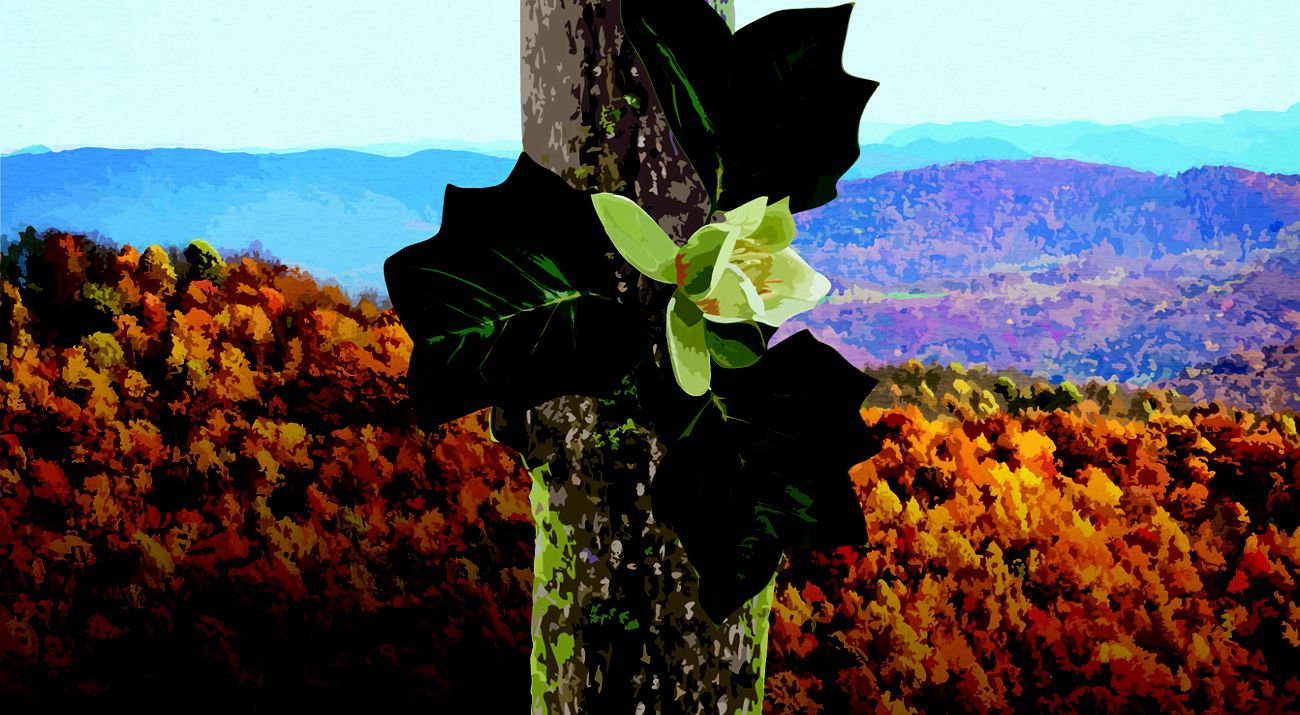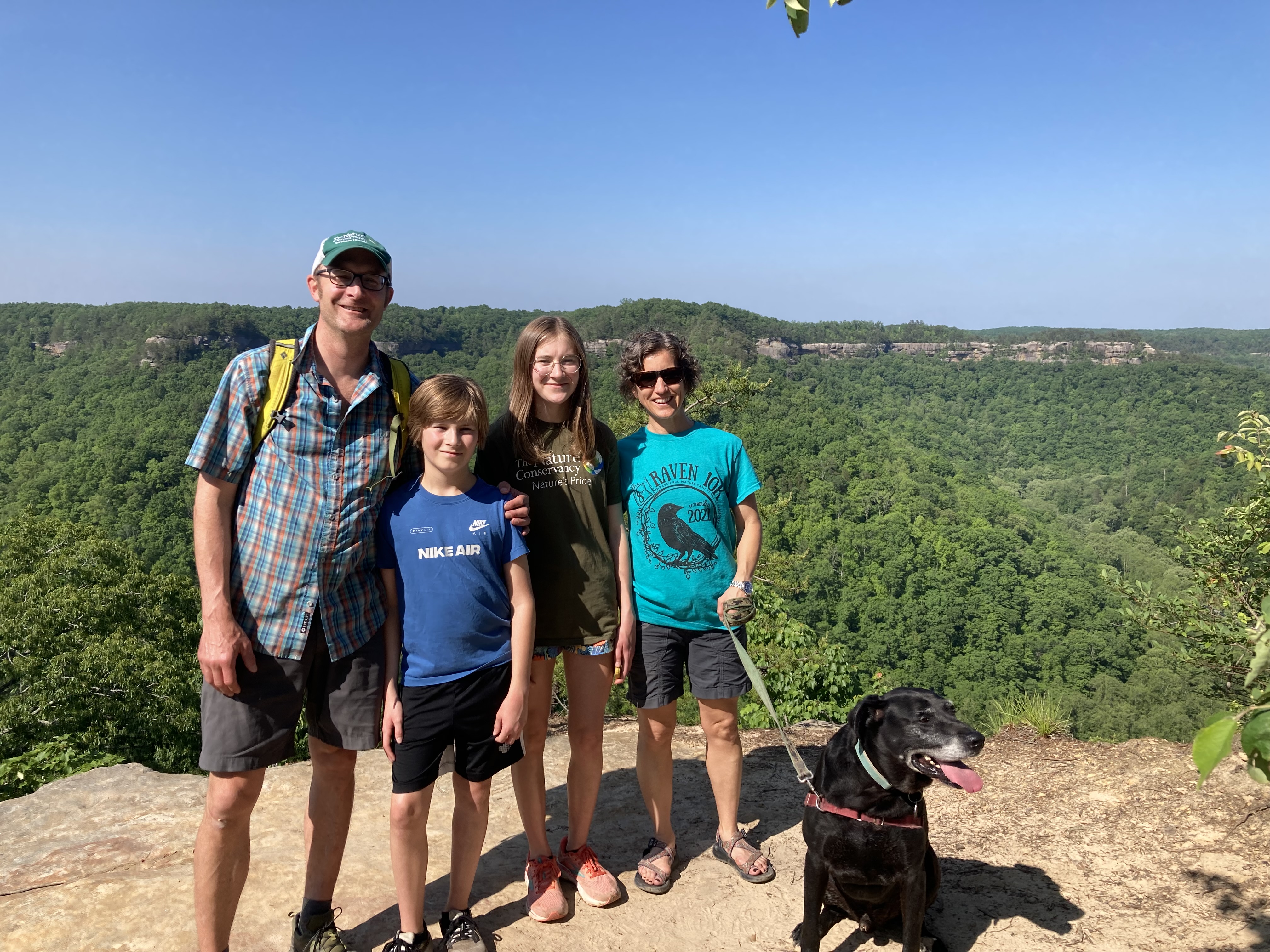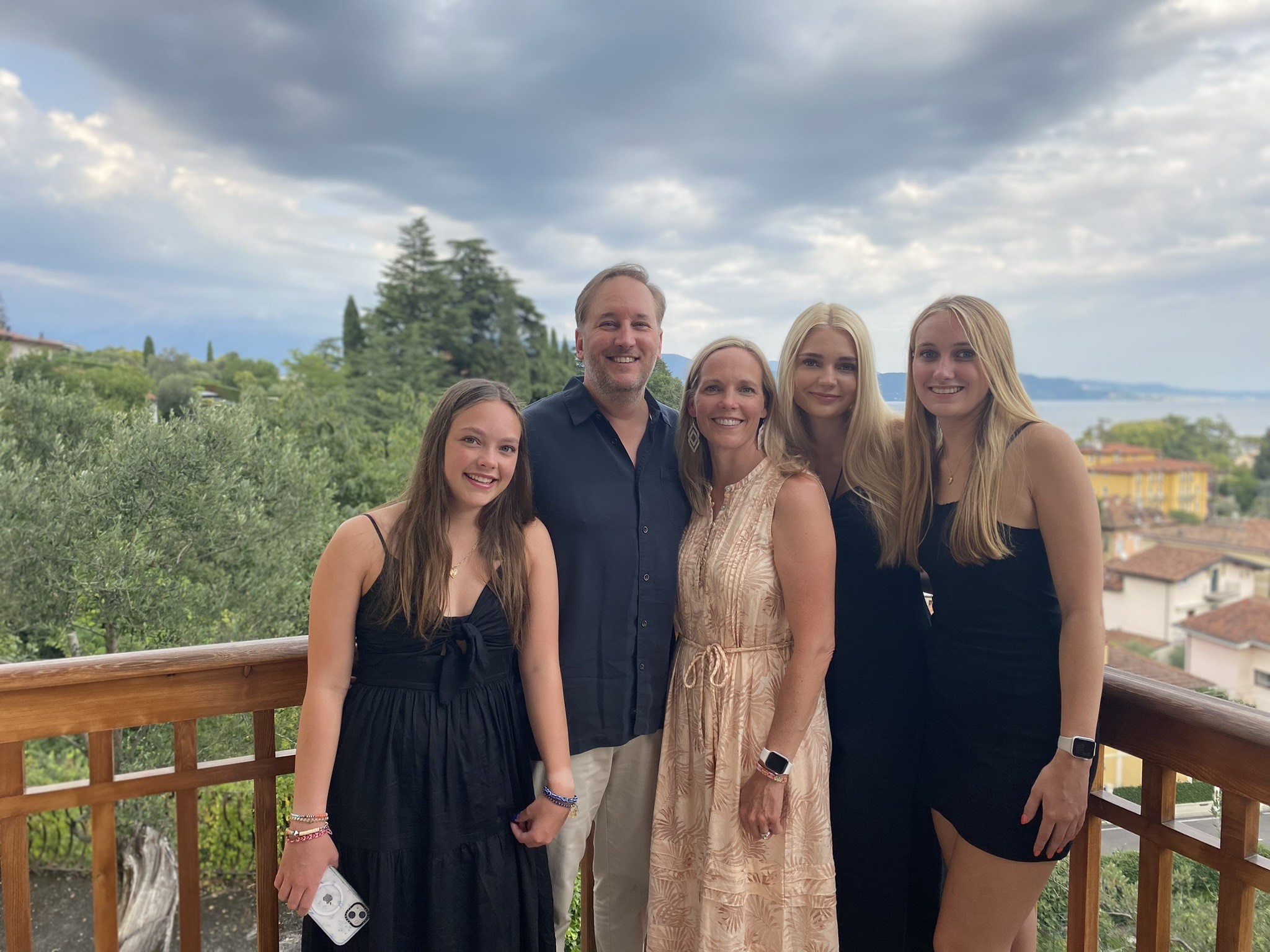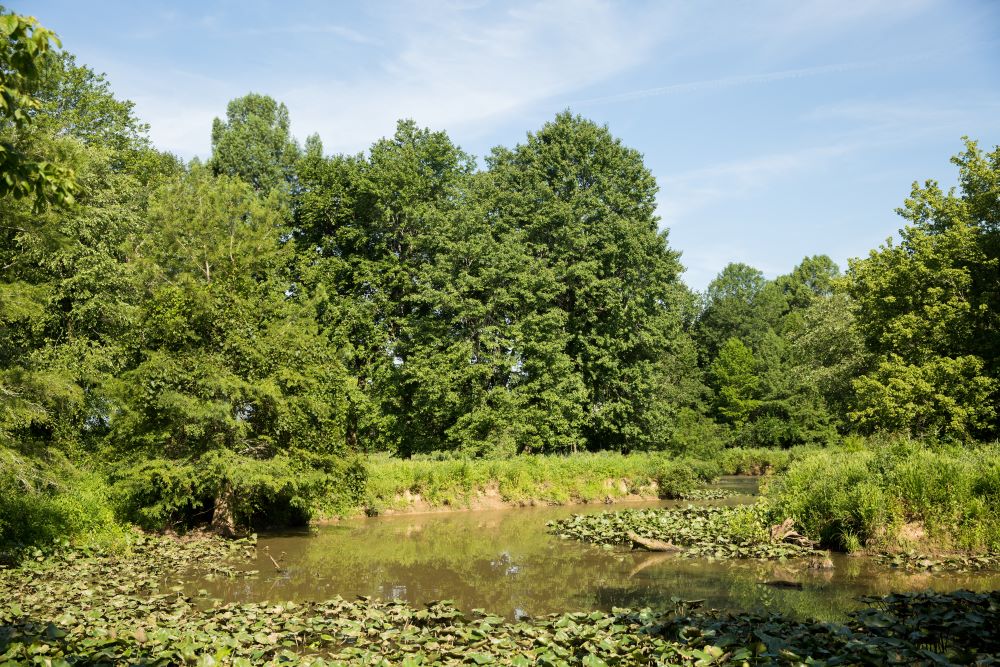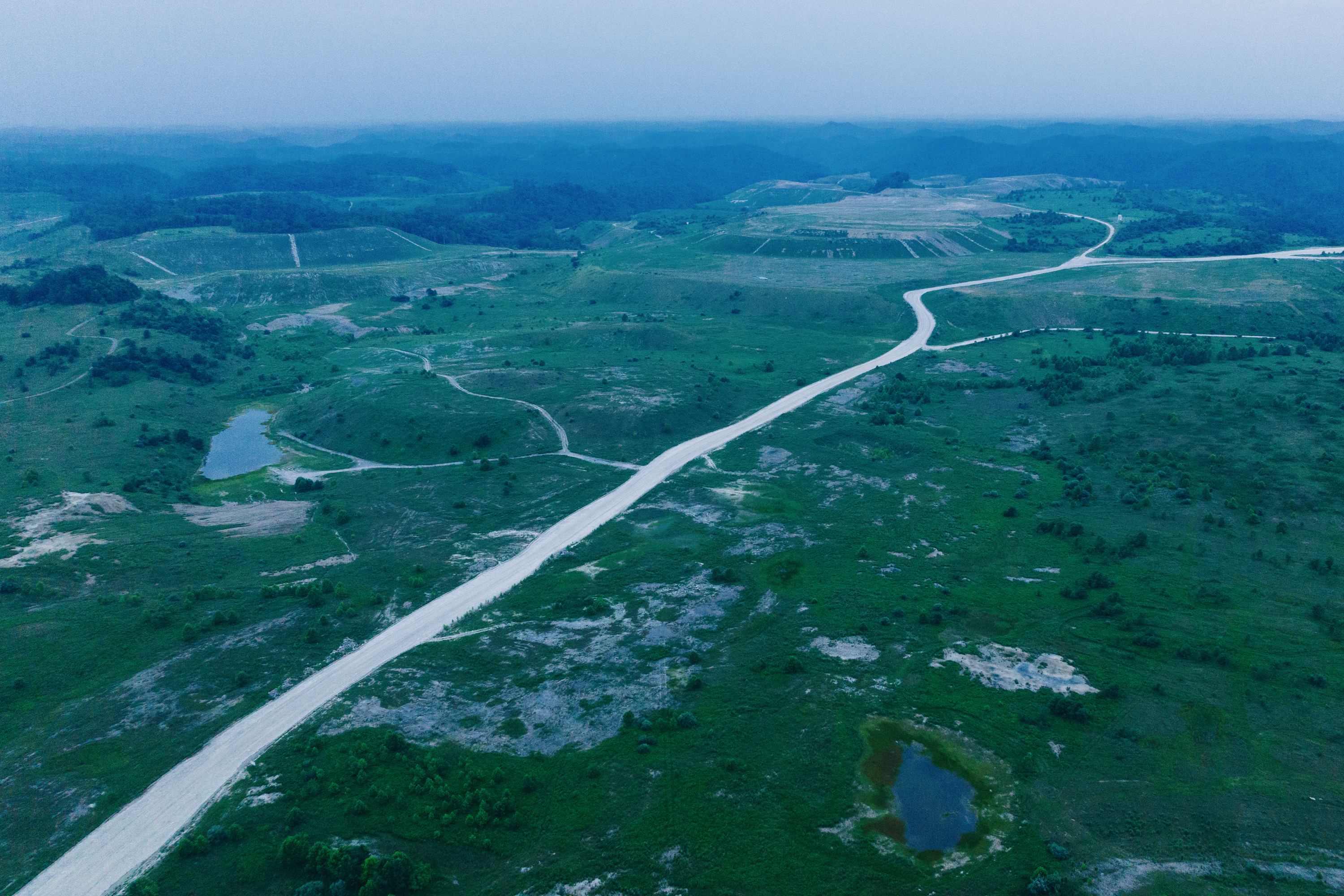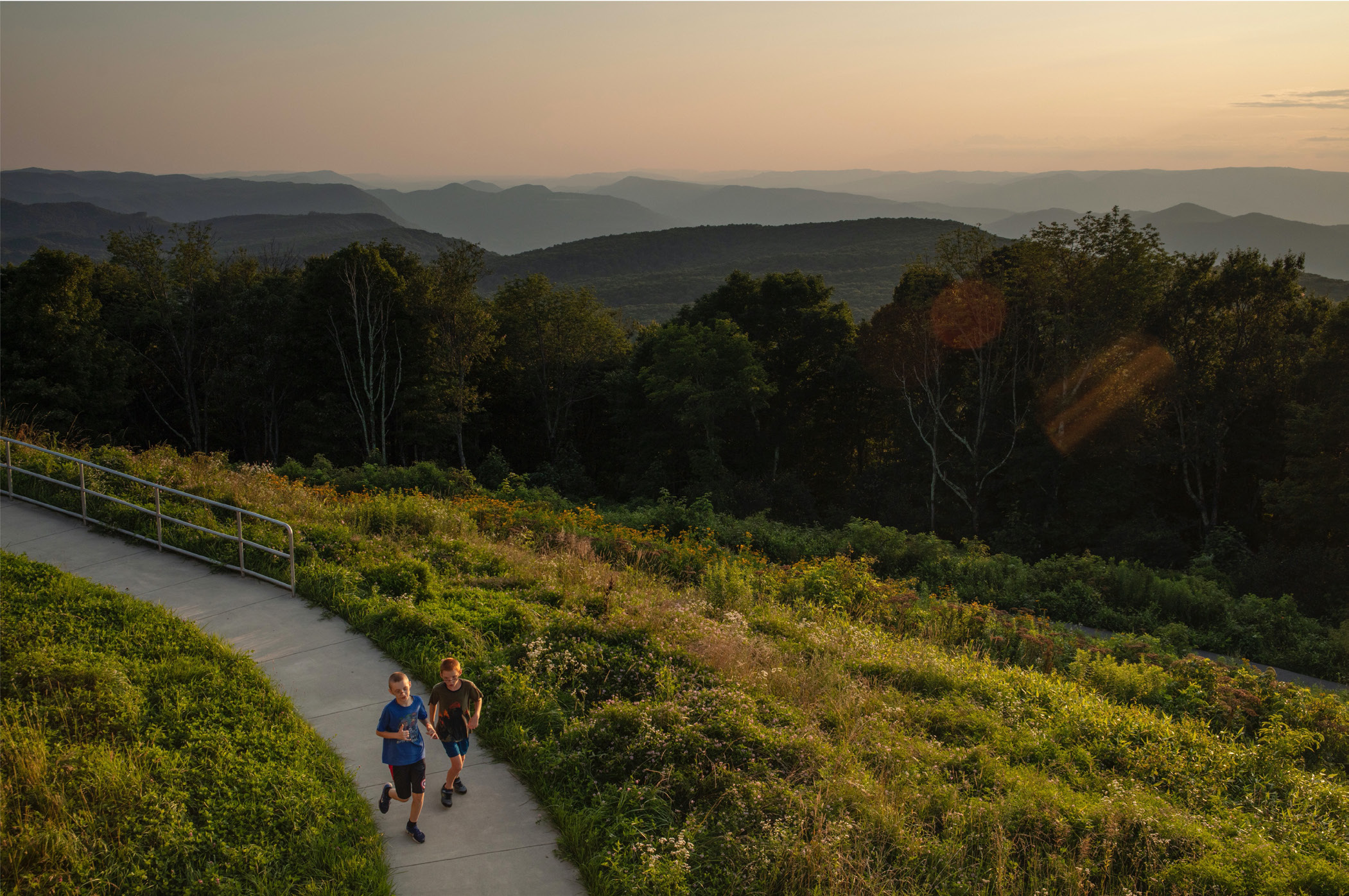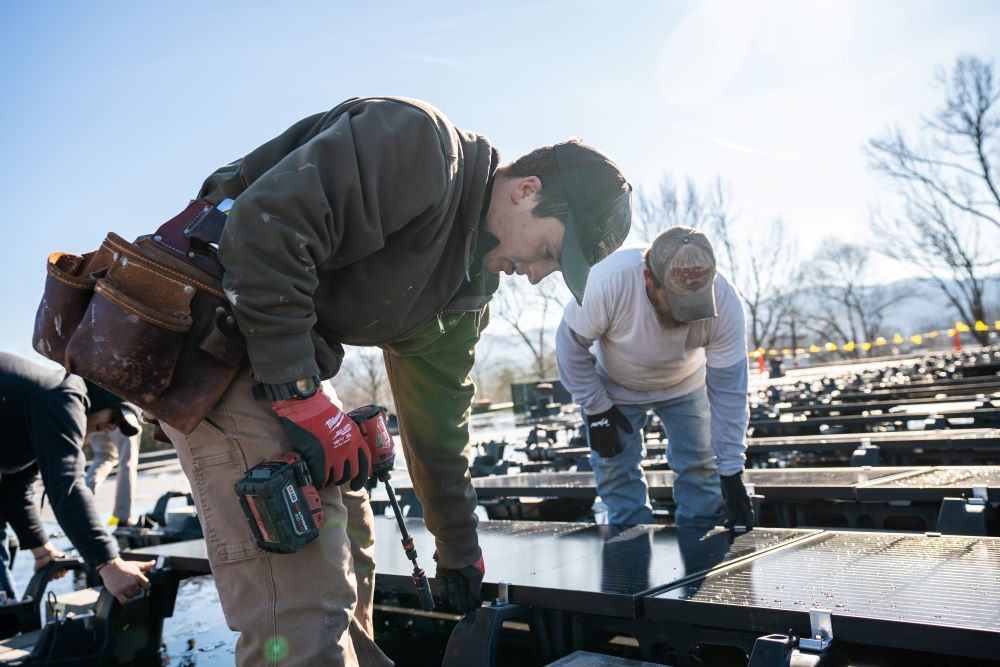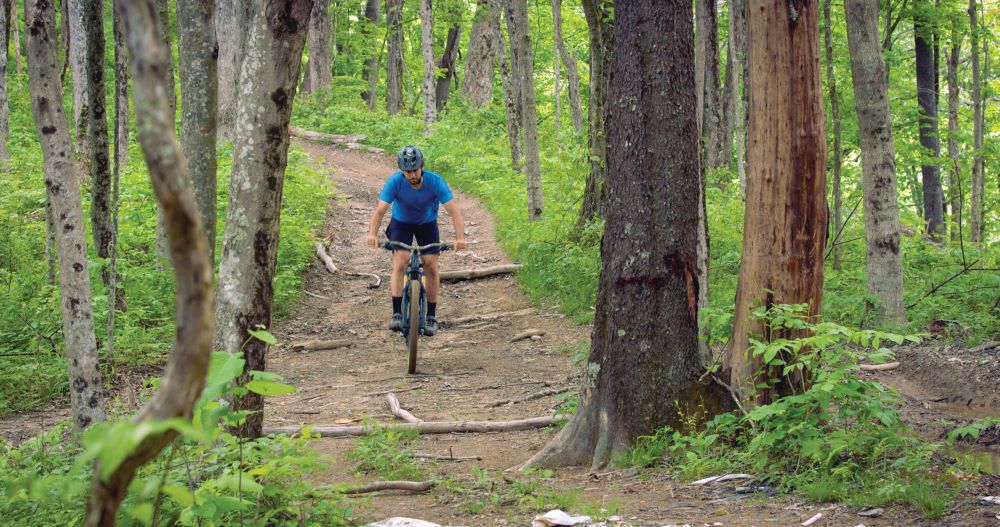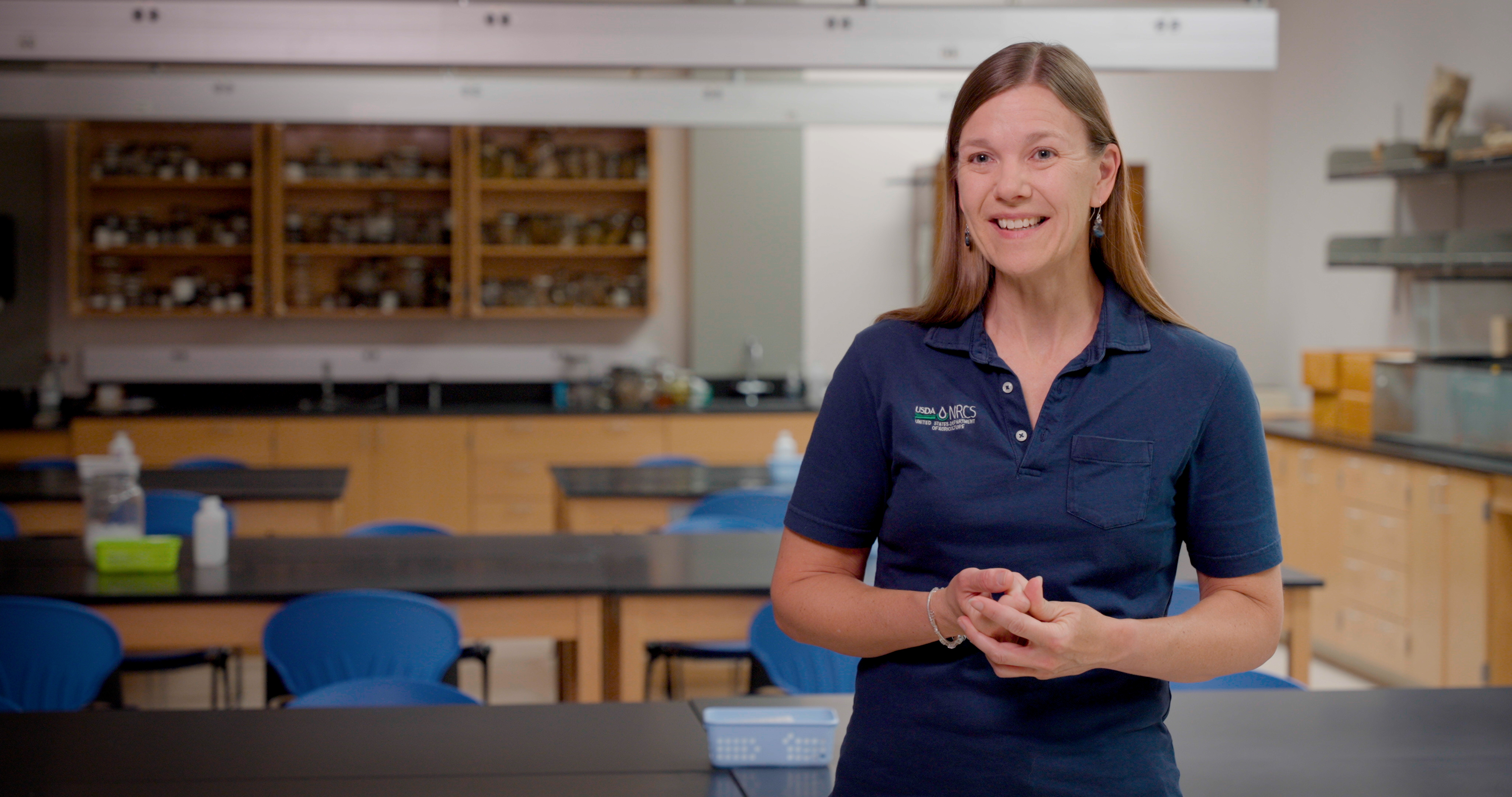From the Director
Renewal in the Mountains
The first thing I noticed was how green it was. The last time I had seen our mine land reforestation project on the Cumberland Forest property outside of Middlesboro, Kentucky, the landscape was a dull brown, and the planting area looked mostly like a field of rocks.
Back in March, you had to walk slowly through the site and look carefully for the small saplings poking out from the still ragged surface. Now, in late July, lush vegetation carpeted the site, and closer inspection yielded small oak, poplar, cherry, sycamore, hickory and maple trees amid a sea of native grasses, coneflowers, milkweed and black-eyed Susans. A diverse native forest was taking root, a small but inspiring part of a vast network of resilient and connected Appalachian forest. In a landscape with numerous scars from past extraction, the future promises renewal.
We were on the property for a field tour with staff from Rivian and BrightNight to introduce them to The Nature Conservancy’s work in eastern Kentucky and the larger Appalachian region ahead of the announcement of the Starfire Renewable Power Project the following day. We had a lot to talk about, and much of it centered on renewal and reinvestment.
Looking out over forested ridgelines, we spoke about the final steps of a long journey to secure permanent protection for 55,000 acres in the southeast corner of Kentucky. This easement represents a massive conservation accomplishment, and perhaps most fundamentally it helps chart a renewed future for these mountains and the people who call them home. A future that rests not on extraction but on restoration and reinvestment.
Just a few miles down the hill from the reforestation site, the City of Middlesboro, in partnership with The Nature Conservancy and the Mountain Association, is investing in a greener, more sustainable future with the installation of large solar panels on the roof of its beloved community center. While giving a respectful nod to the city’s long and important connections to coal, Mayor Bowling spoke passionately about his embrace of new opportunities for environmental and economic renewal.
Smaller, rooftop solar like the Middlesboro project provides incredible benefits to communities and avoids siting conflicts (roofs are not otherwise productive habitat). But to address the climate crisis at a global scale, we need a massive shift to renewables, and that will require larger, utility-scale projects. BrightNight’s Starfire project provides a notable example of how we can achieve that goal without impacting productive working lands and intact habitat.
While still in its initial stages, this project also promises economic opportunity for communities working to transition alongside enormous changes in the nation’s energy sector, another compelling story of renewal taking shape amid some of the oldest mountains on Earth, the Appalachians.
My thanks to you for being a part of these and other inspiring stories with your ongoing and generous support. As always, I am grateful.
David Phemister
Kentucky State Director
From the Board Chair
Looking Forward
I became Chair of the Kentucky Board of Trustees in February of 2023, taking over the role from Mike Mays. Mike is a thoughtful and experienced leader, who did an excellent job as chair and continues to be an engaged and active board member. Thank you, Mike. While he certainly left big shoes to fill, I am grateful for the opportunity to serve in this role.
When my husband, Justin, and I began supporting the work of The Nature Conservancy roughly 15 years ago, I certainly didn’t imagine that I would serve on the Board of Trustees, much less become Board Chair. I just knew that the values of The Nature Conservancy resonated with me—to work toward real solutions with a variety of partners and stakeholders to protect this amazing planet so both people and nature can thrive. That solutions-oriented approach, coupled with my love for nature and the outdoors, was a good fit for me. I wanted to support an organization doing good work for the planet and all its inhabitants, and The Nature Conservancy fit the bill.
As time passed, our connections to and respect for TNC deepened. But so did my concern for the fate of our planet. Climate change went from a future threat to a very present and unsettling reality. At the same time, my three daughters were growing up, and, as a parent, I couldn’t help but wonder and worry about what future they are inheriting.
When David Phemister asked me to join the Kentucky Board, he confessed that as a parent, he often wrestled with many of the same fears for his children’s future. He also shared that working at The Nature Conservancy provided him real comfort, as he was able to translate his worries into work and his anxieties into action. He suggested that serving on the board and seeing and supporting The Nature Conservancy’s work more closely would help me, too. I would see that there are solutions out there and, even more importantly, understand that I could play a small but significant role in delivering them here in Kentucky.
My board service has not been a panacea, and I recognize now more than ever just how much work is required to forge the future we want and our children and grandchildren deserve. But in the end, David has been right. Serving on Kentucky’s Board of Trustees has made me more hopeful and optimistic because action is the antidote to despair. I feel privileged to support an organization still focused on getting important work done, however hard the task.
Please join me in supporting The Nature Conservancy. I believe that doing so will make you proud, as it does for me, to be a part of the wonderful work TNC is doing for people and nature. Oh, and don’t forget to get outside—it will always make you feel better.
Molly Yandell
Board Chair
Lands
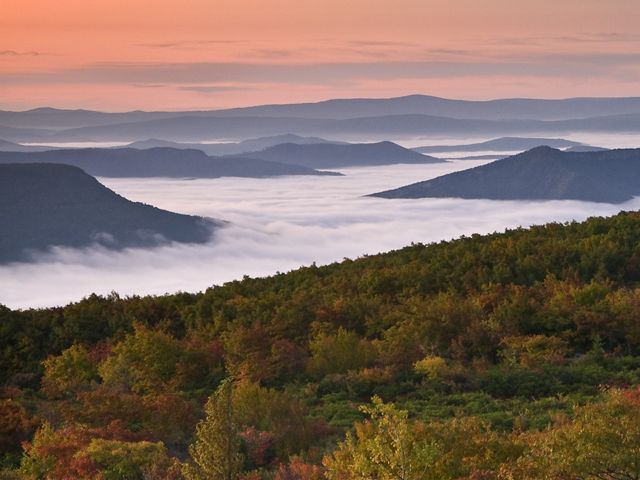
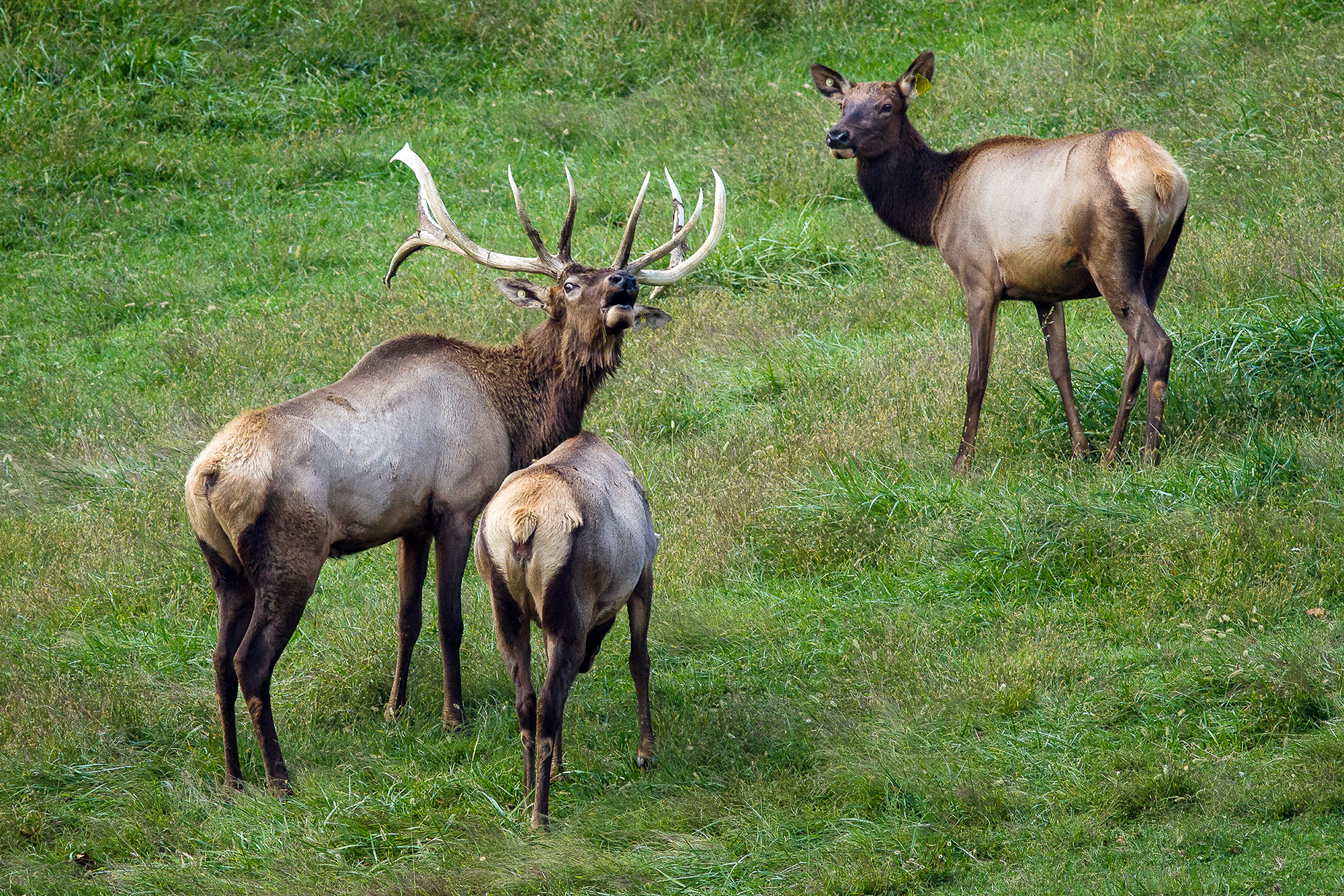
Lands
Protecting 55,000 Acres in the Appalachians
The Nature Conservancy and its partners recently completed a 55,000-acre permanent conservation and public access easement on the Cumberland Forest Ataya property, the largest such easement in Kentucky’s history. The property will now be known as Cumberland Forest Wildlife Management Area. Years in the making, this easement guarantees permanent access for all Kentuckians to this beautiful corner of the Appalachian Mountains. In a state with relatively little public land, the property provides incredible opportunities for wildlife watchers, hikers, hunters and other outdoor enthusiasts to connect with nature.
The Kentucky Department of Fish and Wildlife Resources (Kentucky Fish and Wildlife) holds the easement and worked with TNC and the Rocky Mountain Elk Foundation (RMEF) to secure funding for the project. TNC’s work in Frankfort was essential to securing the funding and legislative support necessary to move this massive project forward. Ultimately, Kentucky’s General Assembly invested $3.875 million in the project to match more than $12 million in federal Pittman-Robertson Wildlife Restoration Act funding that Kentucky Fish and Wildlife Secured. RMEF also received a $650,000 grant from the National Fish and Wildlife Foundation for the project.
“This means outdoor access for all Kentuckians, forever. It’s a place to go to and a place to take your grandkids to,” says Chris Garland, TNC’s Central Appalachians project director. “This is a legacy, and I am especially proud of the partnerships we have forged for the property’s protection and its ongoing management.”
Dian Osbourne, director of protection for TNC Kentucky, reflects that when TNC worked with investment partners to purchase the property in 2019, that was just the beginning. “Permanent protection was always a key long-term goal, and it’s absolutely phenomenal to reach this milestone. I have never worked on a bigger deal, and I have never been more proud of a partnership.”
After an absence of well over a century, Kentucky Fish and Wildlife, RMEF and other partners restored elk to the eastern Kentucky landscape 25 years ago. Since then, ensuring access to the herd for research, viewing and hunting has been challenging. Kentucky Fish and Wildlife relied on temporary leases and short-term landowner agreements but had been unable to obtain substantial, permanent access until now.
“In eastern Kentucky, access to our elk population is one of our top priorities,” says Ben Robinson, Kentucky Fish and Wildlife’s wildlife division director. “This property has been on our radar for several years. This is a huge win for the agency and for the sportsmen and women of the commonwealth.”
Steven Dobey, RMEF’s senior conservation program manager in the eastern U.S., was impressed by the immensity of the Cumberland Forest Project when he learned of the acquisition years ago.
“TNC leading the initial acquisition in 2019 was visionary for landscape-scale conservation in the Appalachians as a whole,” he says. “I was thrilled that RMEF could play a role in the long-term plan for the Ataya property.”
RMEF was part of the discussions on permanent protection of the property from the beginning. As a result of dedication and persistence, the partners moved forward through changes and setbacks, eventually landing on the conservation easement model.
“This is a massive win for sportsmen and women who want to pursue elk,” says Dobey. “In 2022, estimates suggest those elk hunters contributed $3.1 million into local economies for activities related to elk hunting—from hunting guides to fuel and lodging. In a financially distressed region, that is a big number.”
In addition to elk hunting, Kentucky Fish and Wildlife, TNC, RMEF and other partners are hard at work on a recreation management plan to ensure the public can enjoy wildlife watching, hiking and other outdoor pursuits on the property. All of these activities play a role in boosting eastern Kentucky’s economy.
Robinson says he hopes this easement will pave the way for future conservation partnerships with TNC.
“TNC is such a great organization to work with,” he says. “The thing I like most is the work ethic of everyone—when something needs to happen, it gets done. Big deals are never easy, and TNC excels at overcoming obstacles and finding creative solutions that benefit everyone.”
TNC has many people to thank for the success of this easement—too many to list here. However, a few key elected officials played an outsized role in ensuring the easement’s success. We thank Senator Robin Webb, Senator Brandon Smith, Senate President Robert Stivers and Representative Adam Bowling for their steadfast and critical support for this project.
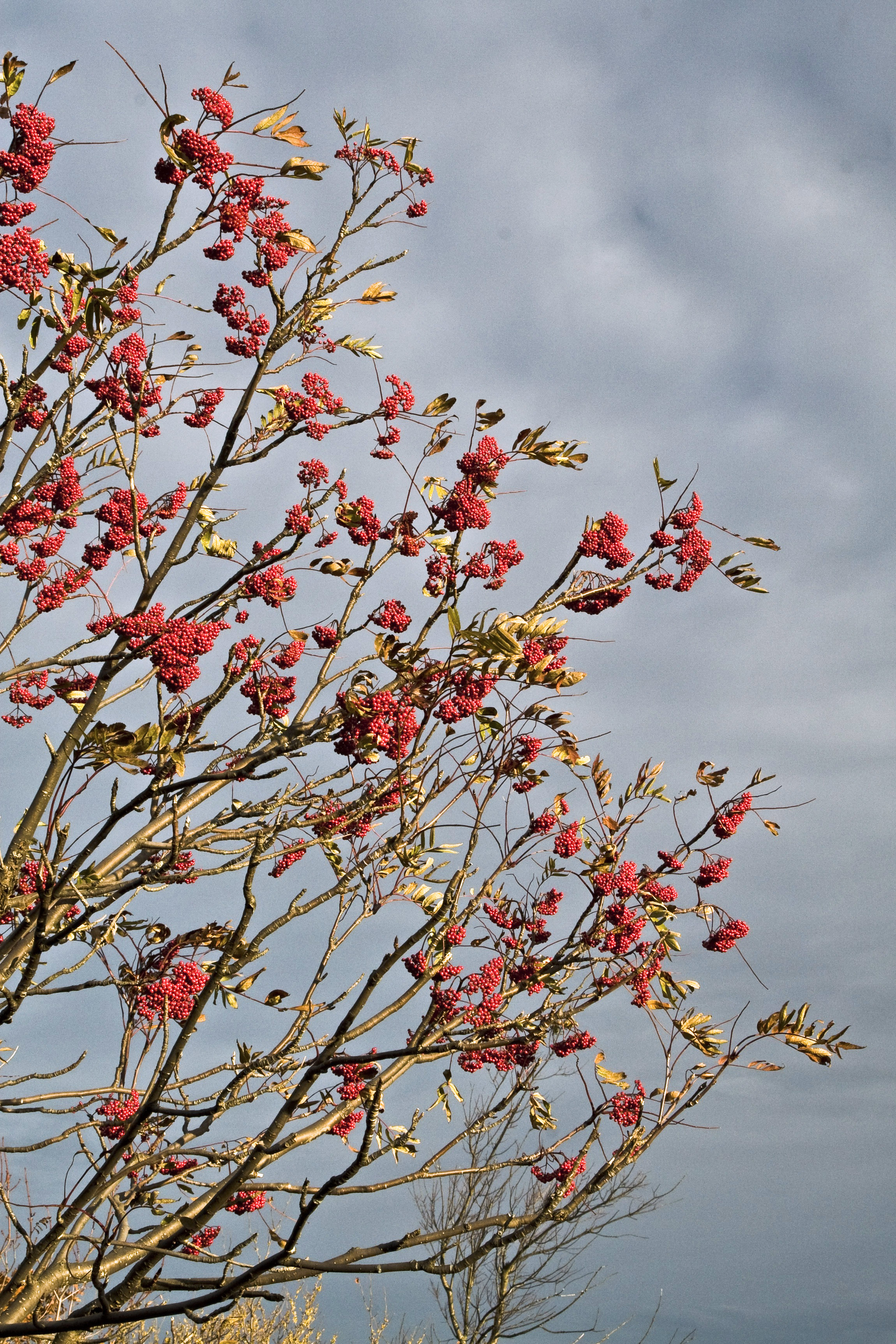
Lands
Conserving a Resilient and Connected Corridor in the Appalachian Mountains
Closed on a historic 55,000-acre easement on the Cumberland Forest Ataya property with the Kentucky Department of Fish and Wildlife Resources. This easement provides permanent public access to the property for activities such as wildlife watching, hunting and hiking. The largest conservation easement in Kentucky history, this win for nature and people connects other protected lands in the critical Appalachian Mountains corridor.
Acquired the iconic Fern Lake property in Cumberland Gap in partnership with The Conservation Fund. Another important win for nature and people, Fern Lake is a beloved property for generations of local community members as well as the water source for Middlesboro, Kentucky. The acquisition forms a connected corridor of protection between the Cumberland Forest Ataya property and Cumberland Gap National Historical Park.
Conducted controlled burns on nearly 8,000 acres in the Daniel Boone National Forest in Kentucky, more than 24,000 acres in the Cherokee National Forest in Tennessee and several TNC nature preserves to enhance wildlife habitat, improve forest health and lower the risk of damaging wildfire.
Leveraged federal and partner funding to create up to six prescribed fire teams for fall 2023 and spring 2024, including a first-ever Central Appalachians fire team, working across state lines to maximize our impact in the Appalachians landscape.
Completed the final phase of an advanced mapping project that will guide more targeted controlled burns on the lands that most need this essential disturbance and restoration tool.
Advocated for expanding the Mammoth Cave National Park boundary to encompass Coach and James caves, which provide critical shelter and foraging habitat for endangered Indiana and gray bats.
Reforested 95 acres of former mine lands in Leslie County with a mix of oak, shortleaf pine and American chestnut trees interspersed with native warm-season grasses and forbs. This reforestation enhances climate resiliency, provides wildlife habitat and connects an important migratory corridor through the Appalachian Mountains.
Transferred more than 130 acres of land in Jackson County to the Daniel Boone National Forest, enhancing management efficiency and adding more public land to this popular destination for outdoor recreation.
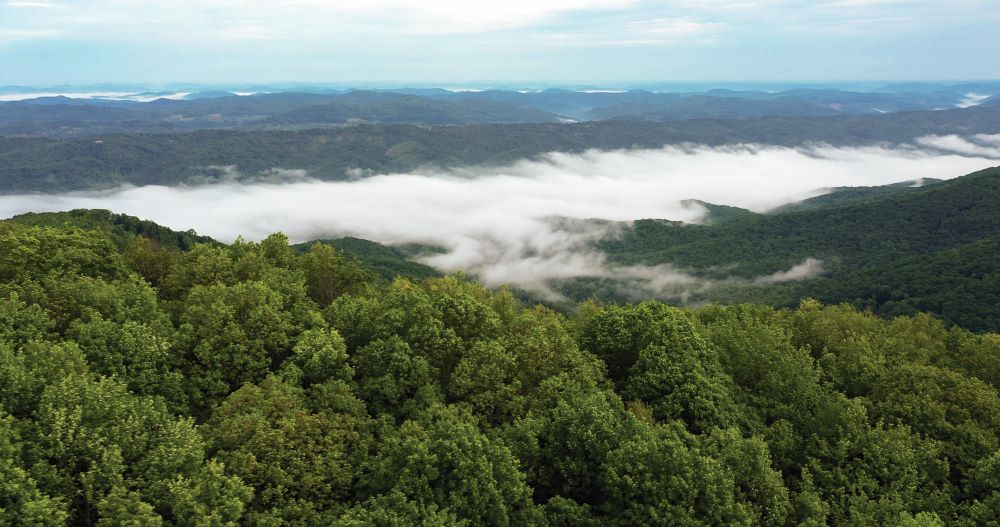
Lands
Looking Ahead
- Transfer the Fern Lake property to Cumberland Gap National Historical Park, utilizing funding from the federal Land and Water Conservation Fund. This transfer will provide permanent public access to the property for park visitors, a priority for the community going back generations.
- Finalize several high-priority land protection deals in eastern Kentucky’s Appalachian Mountains to continue momentum toward our 92,000-acre land conservation goal.
- Continue restoration and management projects on the Cumberland Forest Ataya property, including finalizing a public recreation management plan with Kentucky Department of Fish and Wildlife Resources and reforesting an 80-acre site in Knox County.
Water
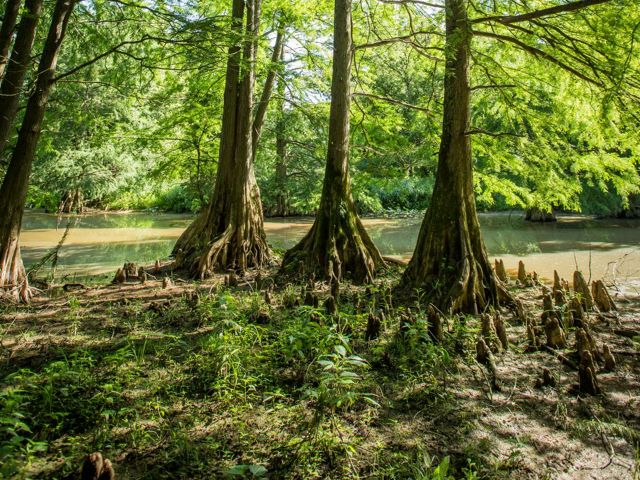
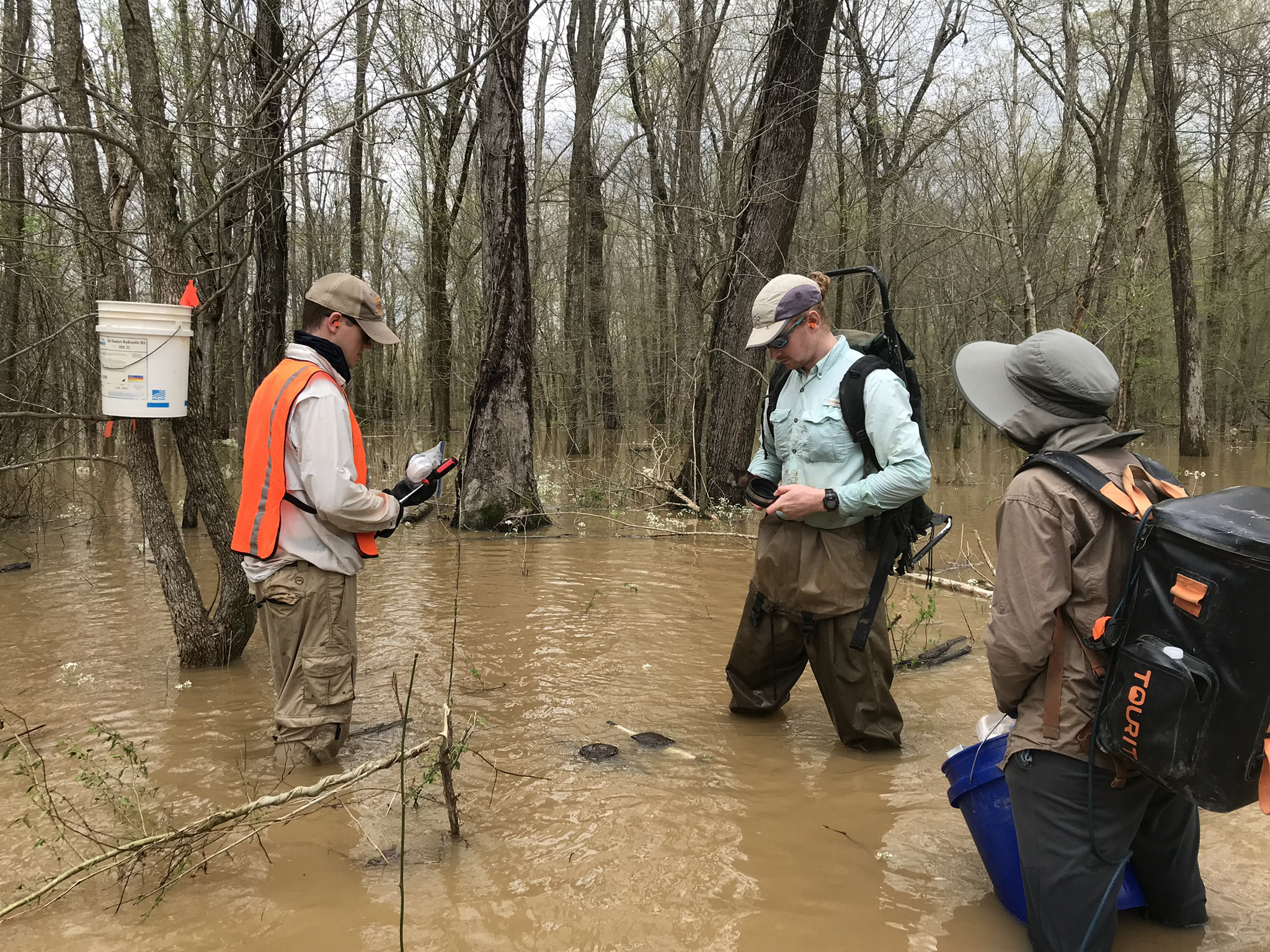
Water
New Discoveries Will Guide Wetland Restoration
The Nature Conservancy and its partners recently completed a six-year, $4.36 million study to quantify the effects of wetland restoration in the Mississippi River Basin of western Kentucky and Tennessee. TNC, the Natural Resources Conservation Service (NRCS) and four regional universities worked together to better understand the benefits of wetland restoration and how they can be enhanced with better project location and design.
“The Mississippi River Basin is important because it drains a huge swath of the continental United States,” says Professor Justin Murdock of Tennessee Tech University. “What we do here affects ecosystems and communities downstream. We are all connected.”
This connectivity means that when excessive amounts of nutrients like nitrogen and phosphorus run off our lands here, this pollution not only affects our water quality, but it travels downstream to the Gulf. The cumulative effect is Gulf hypoxia, a large “dead zone” where aquatic life cannot survive. Restoring wetlands in Kentucky and Tennessee can help improve our local water quality and reduce these downstream impacts.
Murdock and his students studied wetlands’ ability to filter water and store nutrients, which enhances wildlife habitat and reduces nutrient runoff into the Mississippi River. To learn which approach yielded better results, they tested various restoration strategies, such as tree planting, creating shallow water areas and allowing vegetation to return to wetlands naturally.
“What we’re seeing so far is that hydrology measures, like creating small depressions in the land to hold flood waters, jump-start the soils so they can retain more nutrients, regardless of what vegetation is already on the land,” Murdock says. “One of the interesting things we found was that some of the highest rates of nutrient removal occurred at the edges of these shallow water areas, where there is a constant wetting and drying cycle. We know we need to put water on these systems, but there needs to be a natural ebb and flow of water to maximize nutrient retention.”
Gage Barnes, a Ph.D. student with Professor Michael Flinn at Murray State University, studied wetland restoration’s effects on fish and wildlife and their habitats. Barnes found a surprising trend in his research.
“I think the most interesting discovery we made was how quickly plant communities respond to restoration,” says Barnes. “From the time an easement was established, there was a massive increase in native plants, and plant abundance and diversity continued to get better. The improvement in just the first couple of years was dramatic and a great reminder of nature’s resilience when given a chance.”
For Shelly Morris, TNC’s director of freshwater conservation, these results are meaningful far beyond Kentucky and Tennessee.
“Dozens of people worked together to increase the body of knowledge around wetland restoration in the Mississippi River Basin,” Morris says. “This new science will be beneficial not just to us, but also for any conservation practitioner looking to restore wetlands and floodplains. This project generated an enormous amount of data to guide our work and improve our conservation outcomes in the future.”
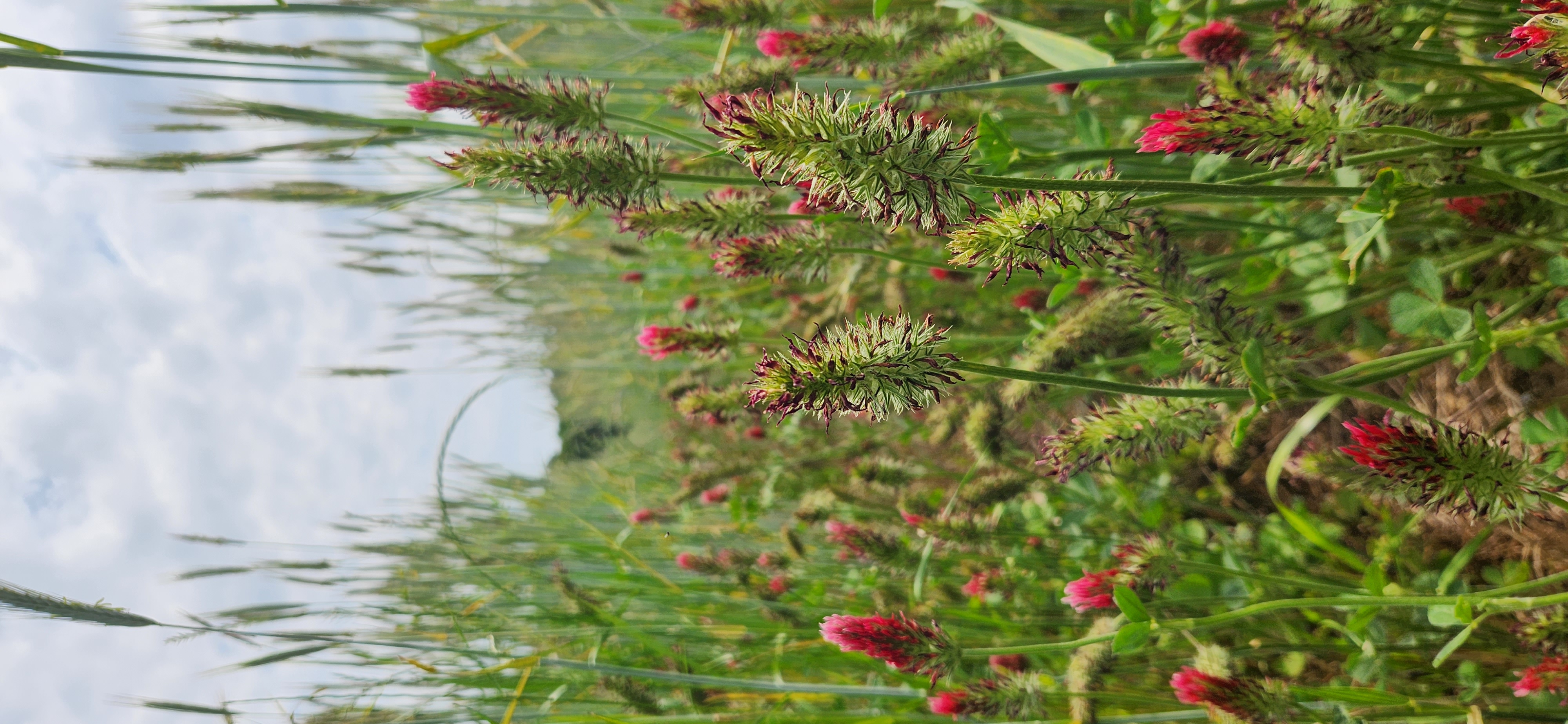
Water
Restoring the Mississippi River, Tributaries and Floodplains
Completed a six-year, $4.36 million wetland monitoring study for the Natural Resources Conservation Service (NRCS). TNC worked with four regional universities and dozens of researchers to quantify the effects of wetland restoration on wildlife populations and nutrient pollution reduction in the Mississippi River Basin. The results will inform better restoration practices that benefit nature and people and drive future restoration investments.
Completed the latest round of the Wetlands Reserve Enhancement Program (WREP) for Kentucky and Tennessee, converting frequently flooded cropland back to bottomland hardwood forests to enhance wildlife habitat, reduce community flood risk and increase water quality in the Mississippi River Basin. TNC and NRCS have invested $32 million into this critical wetland restoration program since 2011.
Planted nearly 700,000 tree seedlings in western Kentucky to support wetland restoration on almost 2,000 acres.
Completed hydrology restoration projects in western Kentucky such as dam repairs, tile-breaking and removing drainage systems from fields to restore wetlands.
Completed the Historically Underserved Producers project, which provides a strong foundation for connection with underserved landowners to enhance equity in conservation.
Engaged an engineering consultant to seek infrastructure solutions for the Edmonson County Water District and ultimately remove Green River Lock and Dam #5.
Continued to provide key assistance for the Dogtooth Bend project in southern Illinois to achieve critical floodplain conservation and wetland restoration goals. So far, we have advanced restoration on more than 6,000 acres, with thousands more awaiting funding. We are now working with the U.S. Army Corps of Engineers to further develop this important conservation project.
Engaged with TNC’s Floodplains by Design Accelerator project, which could lead to additional investments in our wetland restoration work here in Kentucky.
Implemented interseeder technology more widely with NRCS, following a successful demonstration project in 2022. This technology addresses multiple barriers for farmers to plant cover crops, which protect soil health and water quality by keeping living roots in the ground year-round.
Hired a new Floodplains Conservation Manager to advance conservation in the Mississippi River Basin of western Kentucky and Tennessee, expanding our work on floodplains, flood risk reduction and natural climate solutions.
Water
Looking Ahead
- Utilize new science from our completed wetland monitoring study to drive better conservation outcomes and seek new investments in wetland restoration.
- Complete removal of Green River Lock and Dam #5, working with Kentucky’s Congressional delegation to obtain funding for and make progress on an infrastructure solution for the Edmonson County Water District.
- Transfer the Green River Lock and Dam #6 and Barren River Lock and Dam #1 properties to the Kentucky Department of Fish and Wildlife Resources and the National Park Service.
- Identify adoption barriers for grass buffers, a regenerative agriculture practice, to better understand limitations to current programs and develop tangible new ideas for a pilot project to increase buffer adoption.
- Implement a project to cost-share equipment with farmers that makes it easier to plant cover crops and pay incentives to agriculture retailers to offer cover crop planting as a service.
- Develop and implement a new WREP wetland restoration project with NRCS to continue to protect and restore thousands of acres of high-quality floodplain in the Mississippi River Basin.
Climate
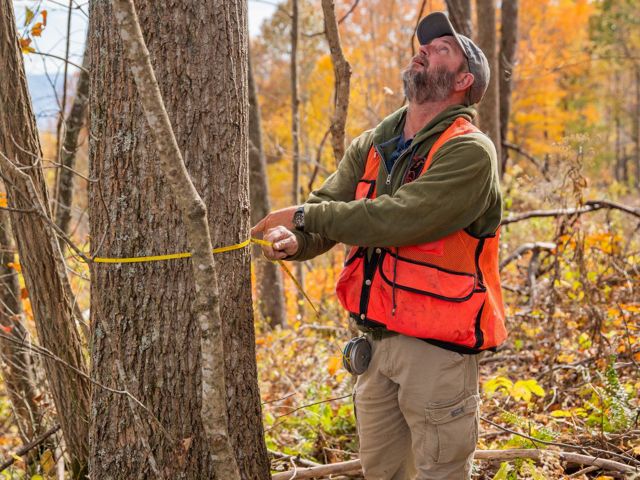
Climate
Mining the Sun: Solar Power Comes to the Coalfields
The Starfire coal mine in eastern Kentucky is legendary. One of the largest mines in the country, it helped power America and employed thousands of miners in its heyday. But as coal declined, so did Starfire. Most of the land is now reclaimed. It will soon begin a new life as the largest solar installation in Kentucky and one of the largest in the U.S. on a former mine.
“You are witnessing the future right here,” said The Nature Conservancy’s CEO, Jen Morris, during the project’s announcement. “This is the future of how we in the United States build out our renewable infrastructure in a way that doesn’t undermine nature.”
Finding appropriate lands for utility-scale renewable energy projects is challenging. Forestland and agricultural lands are necessary for nature and people. Using reclaimed surface mines and other unproductive lands is a better alternative. Solar development in eastern Kentucky can also help diversify and grow the region’s economy, an opportunity badly needed in the wake of coal’s decline.
“We see this as an opportunity for eastern Kentucky to continue to be an energy leader,” says David Phemister, TNC’s state director for the Kentucky program. “We recognize that it is not a silver bullet to the economic challenges, but solar power can and should be a part of that solution.”
TNC and electric vehicle manufacturer Rivian together established a rigorous competitive process for selecting a clean energy project that will make significant contributions for climate, conservation and communities—what TNC calls the “3Cs.” This analysis led them to select renewable power producer BrightNight’s Starfire project as an excellent opportunity.
TNC will purchase up to 2.5 megawatts (MW) of renewable energy credits from the project to achieve its sustainability goals. Rivian will purchase 100 MW, which will power up to 450 million miles of renewable driving every year. When the project is complete, the BrightNight Starfire Renewable Energy Center will have an 800 MW capacity, producing enough electricity to power more than 500,000 households annually. While still in its early stages of development, the future of power production from the Appalachians is off to a strong start.
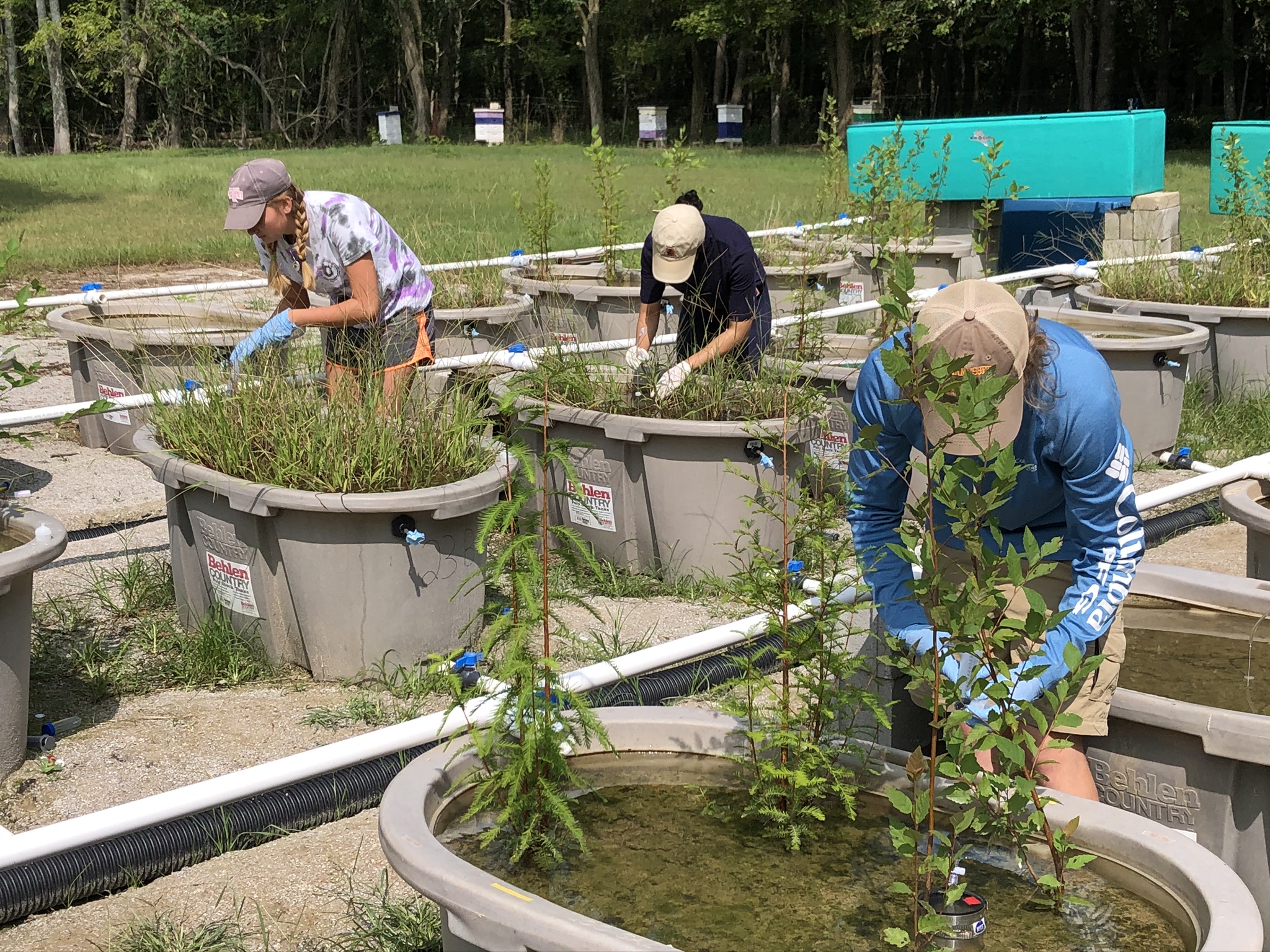
Climate
Addressing the Climate Crisis in Ways that Matter to Kentucky
- Celebrated the announcement of the BrightNight Starfire Renewable Energy Center, a planned 800-megawatt solar installation on a former coal mine in eastern Kentucky that will power the equivalent of 500,000 households when complete. TNC worked with electric vehicle manufacturer Rivian to encourage their purchase of power from the project and will purchase up to 2.5 megawatts in renewable energy credits to support our own sustainability goals. The project is expected to break ground in 2025.
- Hired a new conservation forester to develop and deliver the Family Forest Carbon Program, which assists owners of small forests with climate-smart forest management practices, provides a source of income and brings these lands into carbon markets.
- Piloted the Family Forest Carbon Program with three forest owners in Kentucky, Tennessee and Virginia.
- Partnered with the University of Tennessee, University of Kentucky and others to plan for a $30 million Climate Smart Grasslands project that will offer incentives for agricultural practices that address climate change. The project will also perform research to quantify benefits to nature.
- Celebrated Wilkinson Visual’s regional Emmy award for two TNC videos that feature farmers and small business owners feeling the effects of a changing climate.
Climate
Looking Ahead
- Make progress on a state-dedicated funding strategy of at least $5 million per year by completing a needs assessment and feasibility study and continuing to meet with the General Assembly to advocate for increased conservation funding.
- Launch the Family Forest Carbon Program more widely in partnership with the American Forest Foundation.
- Roll out the Climate Smart Grasslands project with partners to assist farmers in overcoming barriers to conservation agriculture practices.
Community
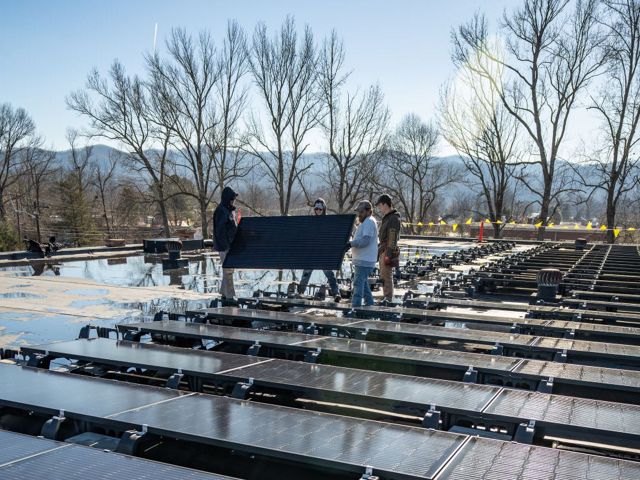
Community
Community Fund Supports Renewable Energy in Middlesboro
The Nature Conservancy in Kentucky recently celebrated its first Cumberland Forest Community Fund project. TNC and its partners at Mountain Association and the City of Middlesboro utilized the Community Fund and other investments to install solar panels on the Middlesboro Community Center’s rooftop, significantly reducing the city’s energy costs for the building. The community uses the popular gathering space for events like weddings, birthdays and graduation parties.
“This investment is going to save us so much money over the years,” says Middlesboro Mayor Boone Bowling. “What can we do to reinvest that money into our downtown, into real economic development opportunities, into high-speed internet for the community? It’s just so exciting for the opportunities this could open up.”
The Community Fund originates from royalty payments from mineral extraction on the Cumberland Forest Project. The property’s surface and mineral estates are severed, with Cumberland Forest LP owning and TNC managing the surface estate and separate entities owning the mineral estate. The mineral rights owner must pay royalties to the surface owner for any coal, oil or gas extraction. While there is now little mining on the property, the Cumberland Forest Project reinvests 100% of the royalty payments it does receive into its Community Fund.
“This solar energy project is such a win for the Community Fund in Kentucky,” says Heather Jeffs, director of external affairs for TNC in Kentucky. “Mayor Bowling’s enthusiasm is inspiring, and this project is just the first step in what we envision being a long partnership with Mountain Association on this kind of work.”
TNC and Mountain Association are already looking forward to their next Community Fund solar installation projects at Redbird Mission and the Leslie County Animal Shelter. Josh Bills, commercial energy specialist for Mountain Association, says solar energy can be an engine for economic growth in eastern Kentucky.
“Solar energy is a great opportunity for workforce development in the region,” says Bills. “It’s a whole new sector that hasn’t been tapped here until recently. It helps the workforce, it helps reduce energy costs and it helps the environment by reducing our reliance on fossil fuels.”
For Bowling, taking the first step into solar energy could lead to many more for this eastern Kentucky community.
“I just want to thank The Nature Conservancy and Mountain Association,” he says. “This does so much for our community. It gives us a vision for a new energy source and for what is possible here.”
Community
Nature Works for Kentucky Communities
- Led a second volunteer event with Green Forests Work and Beam Suntory to engage dozens of volunteers in tree planting on 12 acres of the Cumberland Forest Ataya property in Leslie County.
- Celebrated the installation of solar panels on the Middlesboro Community Center, the first in a series of community solar projects with the Mountain Association funded by the Cumberland Forest Project’s Community Fund. The Middlesboro project will save the city approximately $8,500 per year in energy costs while reducing carbon emissions.
- Provided permanent public access to the Cumberland Forest Ataya property in partnership with the Kentucky Department of Fish and Wildlife Resources. The 55,000-acre property is now open to the public for activities such as hiking, hunting and wildlife watching.
- Supported the creation of a conceptual design plan for the Mill Creek Greenway, a future 1,000-acre public park alongside one of the largest urban stream restoration projects in the country.
- Created a new half-mile hiking trail at Crutcher Nature Preserve that leads to an ephemeral waterfall, enabling additional access to our popular Kentucky River Palisades nature preserves.
- Hosted a panel session, “Investing in Appalachia’s Natural Assets,” at the Appalachian Regional Commission’s annual conference in Ashland, Kentucky to educate attendees about the importance of nature in diversifying eastern Kentucky’s economic recovery.

Community
Looking Ahead
- Install solar panels at RedBird Mission and the Leslie County Animal Shelter alongside Mountain Association and identify additional solar projects for support through the Cumberland Forest Project Community Fund.
- Complete new signage at Bad Branch State Nature Preserve, utilizing new accessible TNC designs and guidelines.
- Complete project plans for hiking trails on the Cumberland Forest Ataya property to increase public access to nature.
- Continue advocating for legislative support for increasing investments in conservation that enable more public access to nature.
- Complete a one-mile accessible hiking trail at Dupree Nature Preserve, ensuring greater equity in access to nature.
By the Numbers
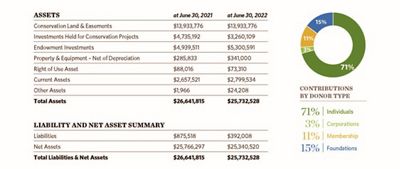
We Can’t Save Nature Without You
Sign up to receive monthly conservation news and updates from Kentucky. Get a preview of Kentucky's Nature News email.
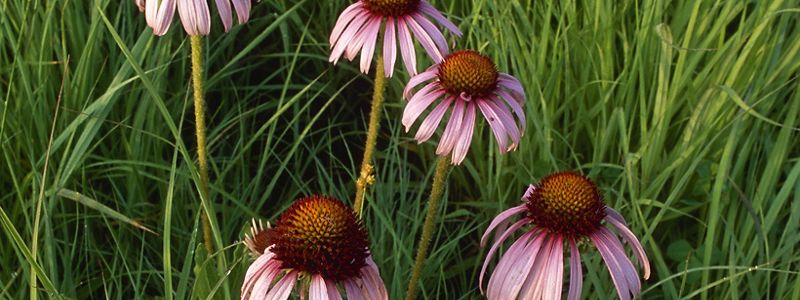
Make a Difference
We are grateful for the ongoing support of all our donors. Make a donation that will have an immediate impact on nature in Kentucky.
